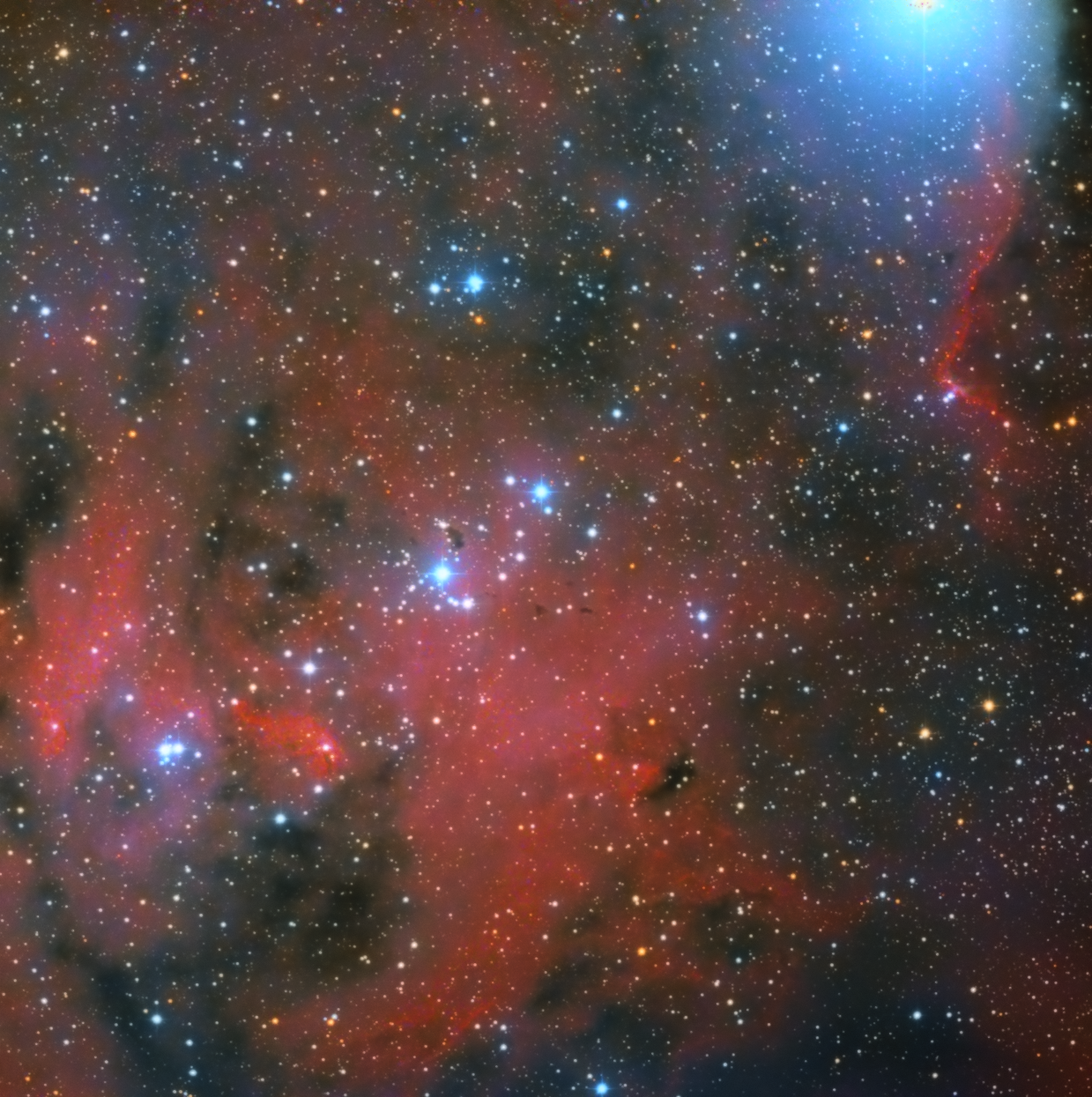Observații ale cerului sudic- Nebuloasa Lambda Centauri fotografiată de Bogdan Stanciu

Grupul de galaxii M81 și M82 fotografiate de Tiberiu Savin
29 martie 2024
Starparty de primăvară cu stele și prieteni
2 aprilie 2024Data publicării 29 martie 2024
RO (for English scroll down)
IC 2944 (Nebuloasa Lambda Centauri sau Puiul Alergător) este un cuplu format dintr-o nebuloasă de emisie și un roi deschis din constelația Centaurus, în apropierea aparentă stelei omonime. Gruparea se află la 6.500 ani-lumină depărtare și strălucește cu o magnitudine aparentă de +4,5. Aici se găsesc stele tinere (8 milioane ani), foarte fierbinți, care emit majoritar în domeniul ultravioletelor – acestea excită gazul nebuloasei, dând naștere nuanțelor roșiatice tipice.
În anul 1950, astronomul David Thackeray a descoperit prezența câtorva globule Bok în apropierea stelelor cele mai strălucitoare din roi, fiind cunoscute azi ca Globulele lui Thackeray. În aceste aglomerări întunecate de praf și gaz au fost observate stele în formare – sunt necesare observații în infraroșu pentru a evidenția aceste protostele. Totodată, a fost observată erodarea acestor globule de către radiația UV, fiind neclar dacă vor supraviețui suficient pentru a permite formarea completă a stelelor.
Nebuloasa are un diametru estimat la 140 ani-lumină și probabil va mai exista pentru încă câteva milioane de ani, timp în care gazul și praful vor fi consumate în formarea de stele noi.
Detalii tehnice:
Cadre: Lum 20×50 sec, RGB 23×20 sec
Telescop: PlaneWave CDK 17” f/6,8 – telescopul remote SLOOH Chile 2
Camera: FLI ProLine PL16803 Monochrome CCD
Procesare: PixInsight
Autor Bogdan Stanciu
EN
IC 2944 (Lambda Centauri Nebula or the Running Chicken Nebula) is an open cluster with an associated emission nebula found in the constellation of Centaurus, in the apparent neighborhood of the star with the same name. The group is 6.500 light-years away and has an apparent magnitude of +4,5. Here we can find very young (8 million years old) and hot stars who emit mostly in the ultraviolet domain – this excites the gas in the nebula, giving it the distinct reddish hue.
In 1950, the astronomer David Thackeray discovered some Bok globules near the brightest stars in the cluster, which became known as Thackeray’s Globules. Inside these dark agglomerations of dust and gas, protostars have been observed – infrared observations are needed to penetrate the obscure globules. At the same time, erosion of these globules has been noticed, caused by the intense UV radiation. It is unclear if the globules will survive long enough to allow the stars within to completely form.
The nebula has a diameter of 140 light-years and it will be around for some millions of years, until the gas and dust will be consumed in the formation of other stars.
Frames: Lum 20×50 sec, RGB 23×20 sec
Telescope: PlaneWave CDK 17” f/6,8 – SLOOH Chile 2 remote telescope
Camera: FLI ProLine PL16803 Monochrome CCD
Processing: PixInsight
Author Bogdan Stanciu





1 Comment
Felicitări Bogdane! O imagine excelentă!